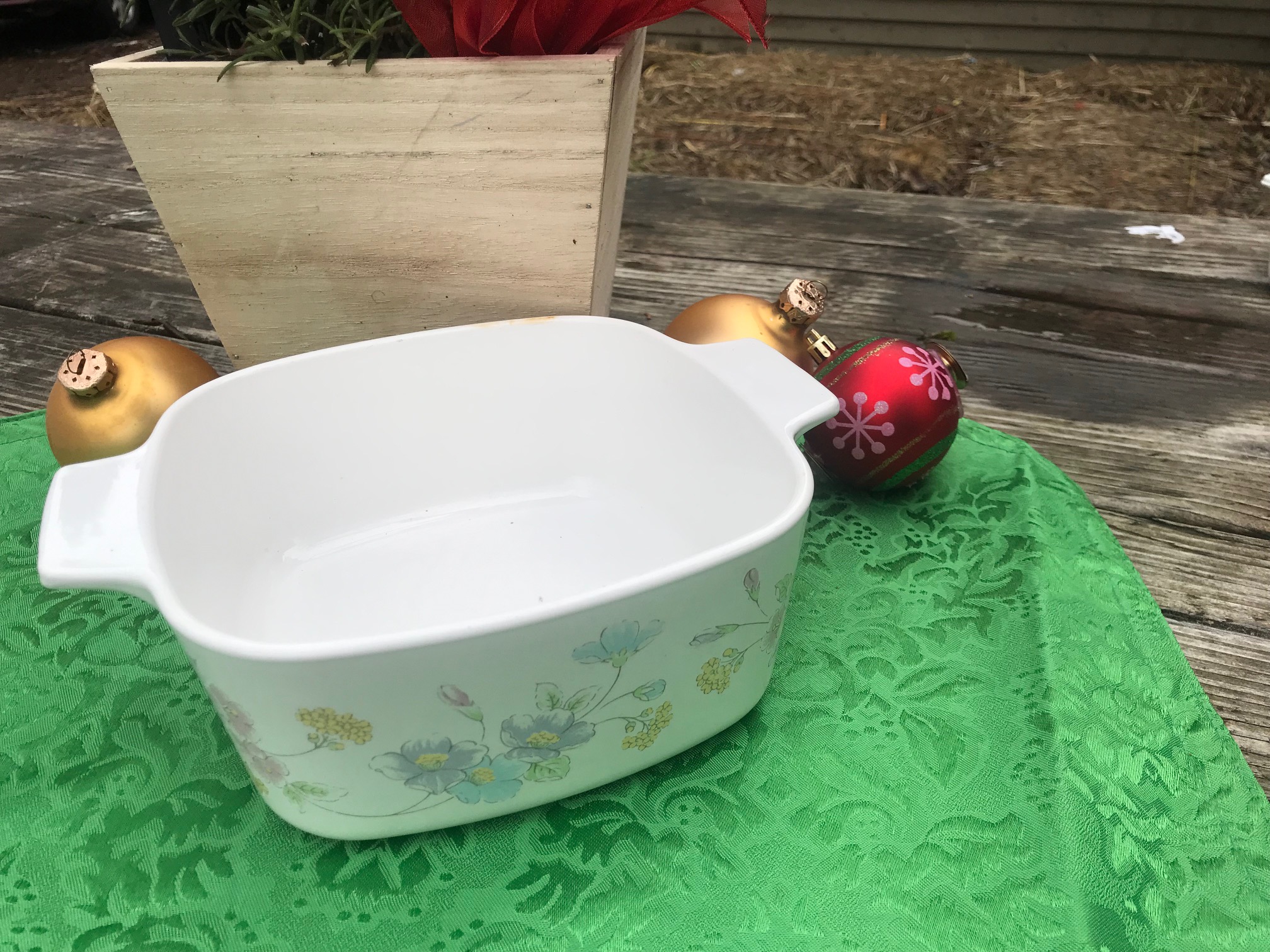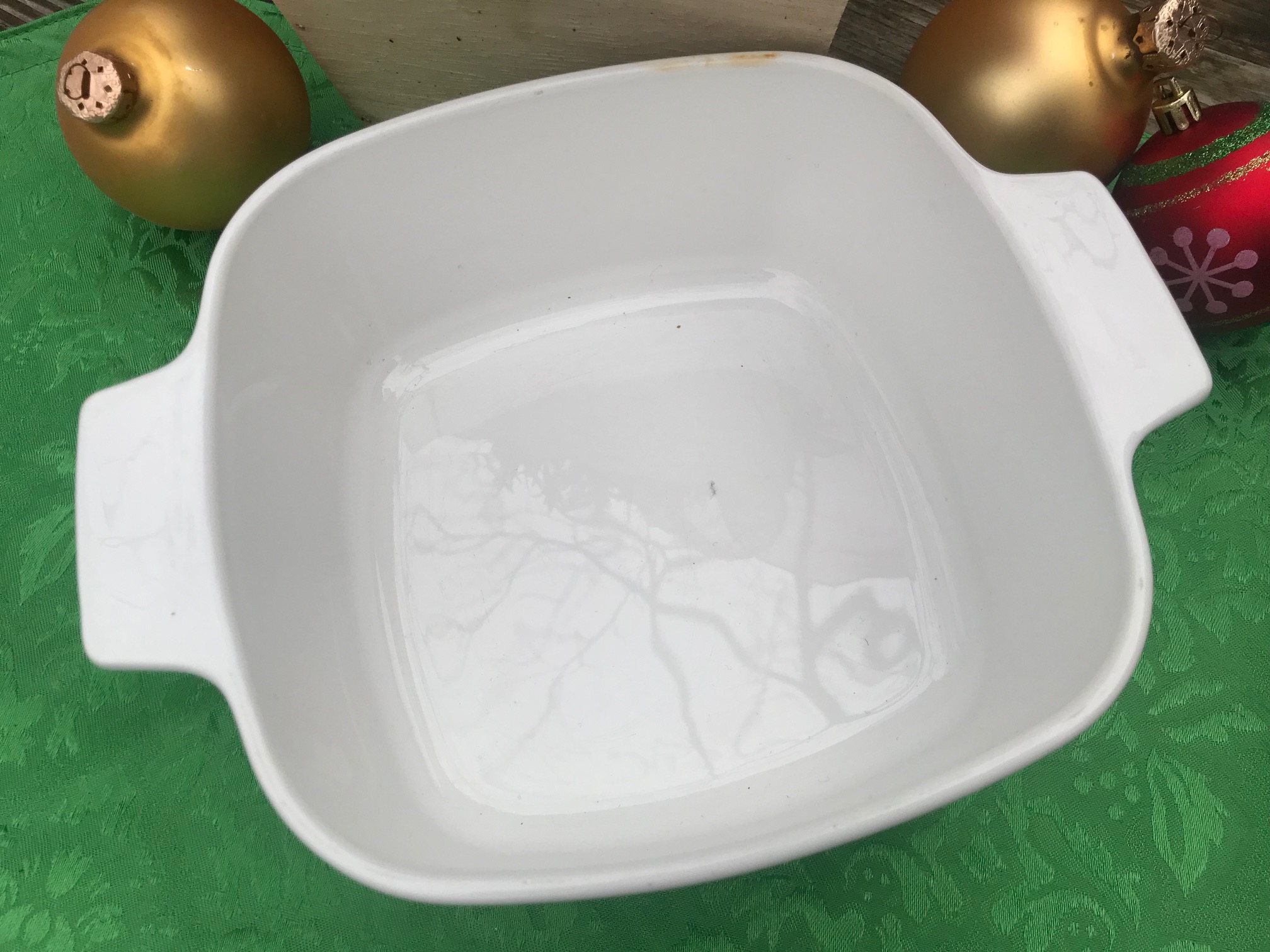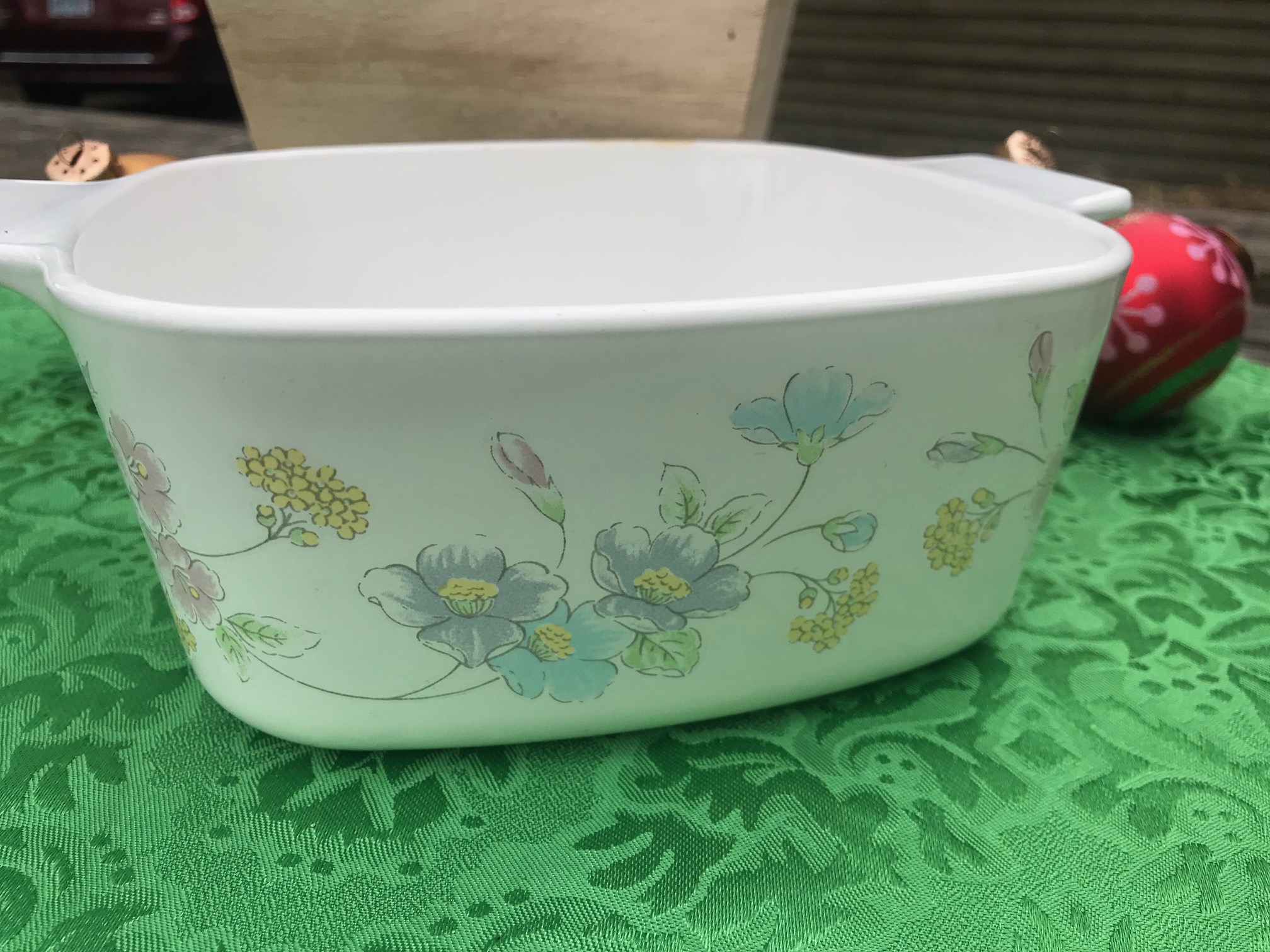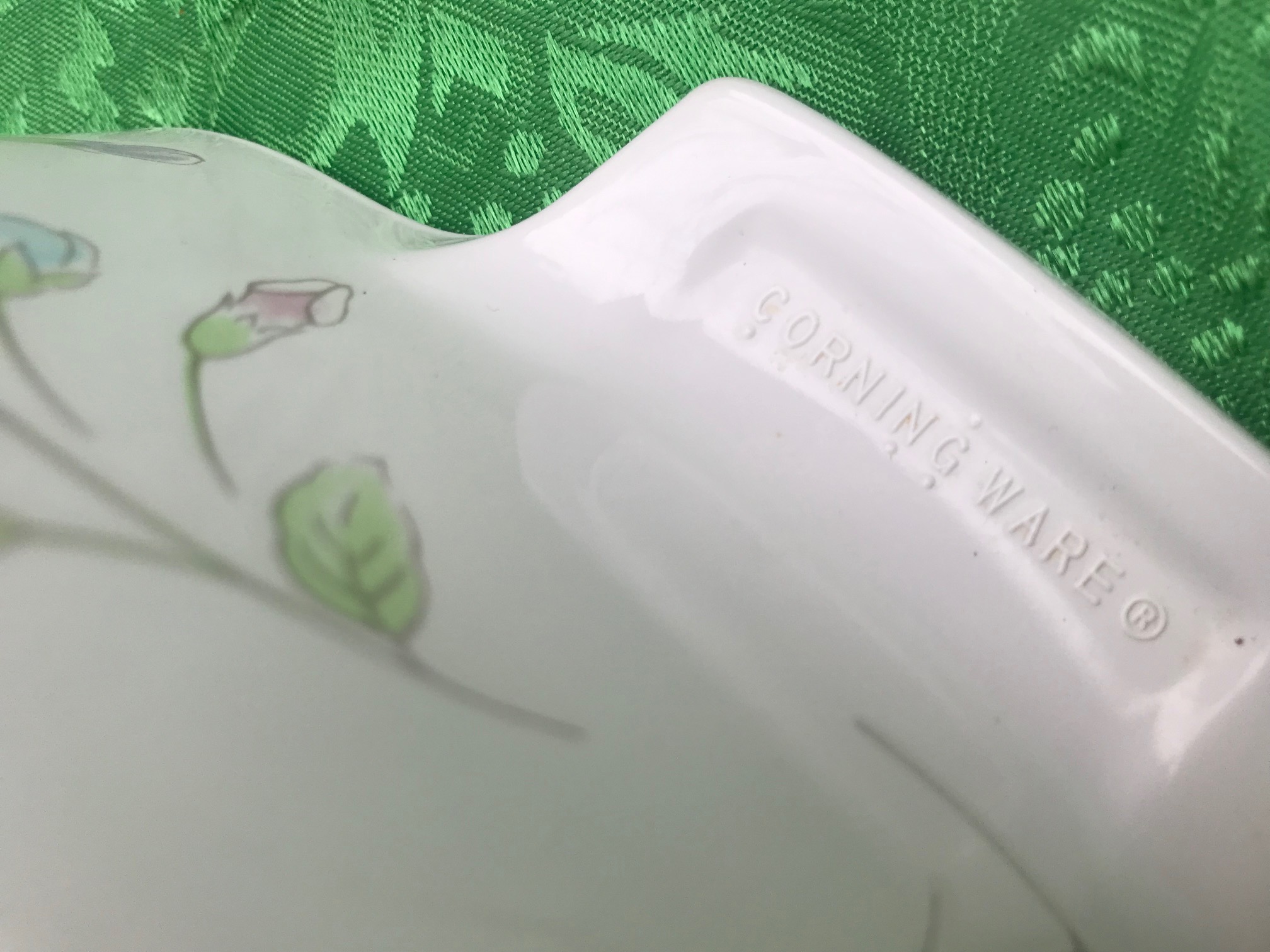Corningware (c. 1985-1990) Pastel Bouquet Pattern Casserole: 20,400 ppm Lead + 205 Cadmium [90 ppm Lead is toxic.]
As expected, the exterior decorative painted flowers on this vintage Pastel Bouquet pattern Corningware casserole was positive for high levels of Lead when tested with an XRF instrument.
Here’s a link to a post on a blog that helps to date many of the Corningware patterns.
To learn more about XRF testing, click here.
To see more of the Corningware casserole patterns I have tested, Click HERE.
Here’s the XRF test results for the exterior design on the piece pictured here:
Scope Focused on Blue Flower:
- Lead (Pb): 17,900 +/- 400 ppm
- Cadmium (Cd): 155 +/- 15 ppm
- Bromine (Br): 158 +/- 12 ppm
- Zinc (Zn): 6,808 +/- 242 ppm
- Iron (Fe): 319 +/- 134 ppm
- Vanadium (V): 211 +/- 62 ppm
- Titanium (Ti): 4,482 +/- 249 ppm
- Platinum (Pt): 270 +/- 113 ppm
- Cobalt (Co): 1,664 +/- 157 ppm
- If a metal is not listed it was not detected by the XRF for this reading.
Scope Focused on Pink Flower:
- Lead (Pb): 20,400 +/- 500 ppm
- Cadmium (Cd): 190 +/- 16 ppm
- Bromine (Br): 154 +/- 12 ppm
- Zinc (Zn): 6,302 +/- 225 ppm
- Iron (Fe): 305 +/- 132 ppm
- Vanadium (V): 214 +/- 61 ppm
- Titanium (Ti): 3,797 +/- 225 ppm
- Platinum (Pt): 561 +/- 123 ppm
- If a metal is not listed it was not detected by the XRF for this reading.
Scope Focused on Yellow Flower:
- Lead (Pb): 20,200 +/- 500 ppm
- Cadmium (Cd): 205 +/- 17 ppm
- Barium (Ba): 133 +/- 66 ppm
- Bromine (Br): 158 +/- 12 ppm
- Zinc (Zn): 6,707 +/- 244 ppm
- Iron (Fe): 449 +/- 145 ppm
- Titanium (Ti): 3,936 +/- 432 ppm
- Platinum (Pt): 426 +/- 124 ppm
- If a metal is not listed it was not detected by the XRF for this reading.
Continue reading below images.
XRF Test results for plain white interior food surface (image above):
- Barium (Ba): 94 +/- 41 ppm
- Antimony (Sb): 50 +/- 15 ppm
- Bromine (Br): 206 +/- 10 ppm
- Zinc (Zn): 9,332 +/- 251 ppm
- Iron (Fe): 291 +/- 101 ppm
- Vanadium (V): 253 +/- 104 ppm
- Titanium (Ti): 19,700 +/- 700 ppm
To see more items I have tested with an XRF instrument, click here.
For context: In 2019, the amount of Lead that is considered unsafe on a newly manufactured item intended for use by children is anything 90 ppm Lead or higher in the paint or coating or 100 ppm Lead or higher in the substrate.
While no one has done any studies as to the health impact of Leaded glazes and paints on the exterior of food-use products like this (because no business or industry benefits from such a study), as a mother of lead poisoned children I personally would not have ANYTHING like this in my home and I especially would not use it for any kind of food preparation or food storage. I would give this a “Grade D” (only sparing this from a “Grade F” because the Lead is not on the actual food surface!)
There are a LOT of terrific lead-free choices for casserole dishes out there. Check out THIS LINK to start.
Thank you for reading and for sharing my posts.
Please let me know if you have any questions.
Tamara Rubin
#LeadSafeMama
If you would like to make a contribution in support of my independent consumer goods testing, click here. Thank you.
Never Miss an Important Article Again!
Join our Email List








I am a bit confused. Is the interior considered safe? I have vintage white Corningware casserole dishes(1985) with no decorations on the outside. Are they safe to use?
If lead is only on the outer paint, why is it not recommended since the inside part that touches the food is safe?
Please read this for context: https://tamararubin.com/2020/07/if-the-lead-is-only-on-the-outside-of-my-dish-measuring-cup-mixing-bowl-etc-why-does-it-matter-that-it-has-lead/